|
Canadians know that any country sitting in the shadow of a more popular neighbour is often overlooked. Spare a thought for Slovenia, that small nation in Central Europe within sight – quite literally – of Italy, Austria, Hungary and Croatia. While international visitors to Europe might beeline to nearby Venice or Milan, Salzburg, Budapest or even Zagreb, many would be hard pressed to locate Ljubljana on the map, much less be able to pronounce it. Slovenia lacks the attention of its more famous neighbours, but discovering its historical capital, frosted peaks, glimmering lakes and lush countryside, it’s clear this modest nation can compete with all of them. With its central location and abundant natural beauty, Slovenia was considered a prize territory for the conquering armies of Rome, Austria-Hungary, Croatia, Germany, Serbia, Italy, and finally, the Communists who incorporated it into Yugoslavia. Claiming its independence with an impressive lack of political turmoil in 1991, Slovenia officially joined the European Union in 2004, adopting the euro but keeping its identity intact. The nation of two million people has quietly got on with the business of becoming one of the most prosperous, stable, and successful of all the post-Soviet states. It frequently ranks among Europe’s best economies, scores big in lifestyle indexes, and it really wants you to not confuse it with Slovakia, a different (and take it from me, less impressive) country altogether. As I wander the streets and canals of old Ljubljana (say it with me: Yoo-bli-yana), I’m reminded of Copenhagen, Stockholm and Budapest. Yet Ljubljana feels cleaner and more civilized than those capitals, immaculately maintained with arty cafes, old world architecture, copper Church steeples, ample bike lanes and manicured parks. Locals roam about, stylishly dressed in that casual, modern European manner of looking fantastic without much effort. I take care not to trip on the city’s polished cobblestone for fear of cutting myself on those striking Slavic cheekbones. Students bike across the Games of Thrones-ish Dragon Bridge and distinctive Triple Bridge, the public art is impressive, and even the urban graffiti is tasteful. Overlooked by the 900-year-old Ljubljana Castle, the capital is a template for any great European capital, with half the tourists. I expect to find more visitor’s at Slovenia’s premier tourist attraction, historic Lake Bled. Sitting at the foothills of the towering Julian Alps, you might have seen images of the lake on screensavers or Instagram or any platform hoping to illicit a ‘wow, where the hell is that?’ response. It had taken me less than an hour to drive the smooth highway from Ljubljana, and ‘WOW’ got cap-locked when Lake Bled came into view. Framed by mountains and thick forest, the placid, emerald-coloured water has a small island in the centre with a notable European landmark. The gothic Church of Mary the Queen was first consecrated in the twelfth century, and restored to its current state in the seventeenth century. “Europe,” as Eddie Izzard remarks, “where History comes from.” Long before the island became a site of Christian pilgrimage, it was a cult centre for Slavs to worship the Goddess of Love and Fertility. Fittingly, couples flock from around Europe for destination weddings in one of several grand lakeside hotels, the remains of former royal palaces. Tradition holds that grooms must carry their bride up ninety-nine steps to the chapel, and ring the famous bell three times for good luck. Judging by the strain I see on the flummoxed faces of several men, carrying anyone up ninety-nine steep steps and then ringing a heavy bell is more difficult than it appears. The rest of us will just fall in love with the warm, azure water, four-hundred-year-old rowboat transportation (called pletnas), lovely ambiance and a location so striking you’d think it had been airbrushed onto the cover of a romance novel.
Visitors to Slovenia often complain they should have allotted more time. More time to explore the notably affordable all-season mountain resorts. More time to hike, fish, bike, raft, and enjoy the country’s abundant outdoor splendor. More time to visit Lipica, the ‘cradle of the race’ of the unicorn-white Lipizzaner horse that have dazzled dressage events for centuries. More time for show caves, the world’s deepest underground canyon, the robber-thief Predjama Castle, or visits to old churches and abbeys. The country is compact and easy to get around, English is widely spoken, and the local cuisine draws heavily on the best traditions of its neighbours: outstanding beer influenced by Hungary; pizza, gelato and coffee by Italy; schnitzels and pastries by Austria.
Yes, we know all about living in the rain shadow of a more famous country that soaks up the world’s attention. This is why Canadians will particularly appreciate that quiet, overlooked and underrated Slovenia might just be the most enticing country in all of Europe – east, west, and otherwise.
0 Comments
 Wouldn't it be fun to go on a bucket list adventure with some of Canada's top photographers, explorers and travel journalists? Yes, it would. I'm delighted to become a Royal Canadian Geographic Travel Ambassador, continuing the great work of this illustrious society to promote the natural and cultural wonders of Canada. This means I'll be hosting select, exclusive trips that tick my own storytelling and adventure boxes, and belong on anyone's Canadian Bucket List as well. Working with fantastic companies and brilliant guides, I'll be enhancing your experience with stories, advice, support, a bucket list presentation, and the knowledge you're indeed enjoying a once-in-a-lifetime adventure. August 23 - 30, 2022: Prince Edward Islands Culinary Delights by Bike Cycling across PEI is pure bucket list: incredible scenery, spectacular coastline, literary and Indigenous history, and the best seafood on the planet. Foodies and adventurer's rejoice! This amazing itinerary combines it all together, as our bags are shuttled ahead to lovely inns and lodges, and our carefully curated itinerary delivers the best experiences on the island. The terrain is mostly flat, and you can even choose to do this week-long trip on an e-bike. I've been working with Ottawa-based Great Canadian Trails for years, and they've perfected the art of a quality, bucket list outdoor Canadian experience. It's going to a blast, culminating with a stay, farm tour and feast at rockstar Chef Micheal Smith's countryside inn. Click here for information, and bring an appetite! August 24 - 30 / August 31 - September 4, 2023: Discovering Banff by Horseback Discovering one of the world's most spectacular alpine landscapes on a 6-day horse ride, staying in luxury yet rustic backcountry lodges, sharing wild stories with fine wine by the crackling fireplace, SIGN ME UP! They did, which is why I'll be hosting two trips in partnership with the fantastic Banff Trail Riders. We'll be riding along a historic pack trail and up Allenby Pass, crossing jagged rock formations and hitting altitudes above 8000 feet. Mountain air, bubbling rivers, wildflowers, soaring peaks, and a great chance t encounter wildlife along the way. Let's tick this one off the bucket list together. Click here for more information and giddy up! Can Geo Adventures are working with fantastic tour operators and other fine Travel Ambassadors to showcase the very best adventures across the country. Check them out, and I hope to see you on the road! In a tiny room, crammed with gadgets and monitors, sits a small button. 24 hours a day, an officer monitors the equipment, awaiting a single phone call. On orders, he places a key into a slot, and turns clockwise. Punching in an access code, he takes a breath, and pushes the small white knob. In just over half an hour, a missile carrying a payload of ten thermonuclear warheads hits multiple targets in the United States. In the ensuing carnage, each warhead vaporizes an area of 200 square kilometres, along with every living creature inside it. Millions die instantly, millions more slowly from the release of deadly radiation. Life as we know it ceases to exist, as thousands of similar missiles criss-cross the skies seeing their targets. All it takes is one push of the button, located in a control room 33-metres below the Ukrainian countryside. My finger draws near. My hand starts to shake. Before its independence in 1991, Ukraine had more nuclear missiles than any other country outside the United States and Russia. Strategically and secretly distributed throughout the countryside, missile units were surrounded by armed guards, 3000-volt electric fences, and protected from attack in deep underground bunker silos built to survive a nuclear war. With the collapse of the Soviet Union, the newly autonomous nation of Ukraine chose to become a nuclear-weapon free zone, and with US support, dismantled its missiles and bases. Today, just three and half hours drive outside of Kiev near the town of Pervomaisk, the legacy of Armageddon is open to the public inside one of the world’s most bone-chilling tourist attractions. The Museum of Strategic Missile Troops is a former Soviet nuclear missile base that has been opened to the public by the armed forces of Ukraine. Under the guidance of former officers who once operated the base, visitors are led on a tour explaining how large-scale nuclear missiles were managed, maintained, guarded, and later dismantled. Other than several missiles and engines on open display, the location appears innocuous – a few low-rise barracks, a tall radio tower. Massive green transport trucks customized to transport thermonuclear warheads hint at something more sinister. Deep beneath the surface lie the control and missile solos designed to destroy the world. As a thick iron door locks us in, I descend into a long tunnel towards the command silo. Immediately, the atmosphere becomes dense, cold and heavy. Slightly hunched, I am opening the mechanical and electrical toolbox designed to initiate Armageddon. Former Colonel Mikael Kamenskov had his finger on the button for over a decade. If the orders had come down, as they nearly did on several occasions, he was responsible for pressing the button, launching the missiles, and annihilating entire cities. Moustached and balding, he is serious man, explaining the detailed security measures and base design using scale models and a stick pointer. He describes how a two-man combat crew would take six-hour shifts, capable of surviving in their subterranean silo for up to 48 days without surfacing. The Colonel does not present the face of a cold-stone killer, and yet his actions would directly have resulted in the slaughter of millions. I remove my Ray Ban sunglasses as we leave the bright sunshine behind and enter the guts of the facility. The air is cool as we walk along a narrow tunnel, once reserved for top-secret military personnel only. Heating, air, plumbing and radiation filters line the walls, while above us, a 120-ton cap protects the giant test-tube shaped silo. The 12-level underground command post silos were built on hydraulic suspensions, to function in the event of earthquake, or more likely, missile attacks. In the eyes of many Soviet soldiers, explains the Colonel, mutually assured nuclear annihilation was not so much an “if”, but a “when”. We cram into a tiny elevator and descend slowly towards Level 12. A loud ringing accompanies the elevator, along with an old rotary dial telephone in case we get stuck. I open the flap doors to find a small circular room with low ceilings, the air musky and dank. Two bunks are fastened to the walls, a simple airplane-like toilet behind a door. Bleak as a tomb, this was the living quarters for the two officers on duty. An iron ladder takes us up to the next claustrophobic level, the command room. All signs of life are removed. Trees, animals, seas, clouds and cities only exist here in the imagination. I take my seat, and imagine myself on duty, the hotline ringing. Even though the button is useless and the missiles long since destroyed, it feels like I’m playing with an unloaded gun. I’m thinking about the horrifying photos from Hiroshima and Nagasaki, displayed in the museum above. Is the barrel empty? My hand shakes. I just cannot bring myself to do it. Some buttons are just not meant to be pushed. My bones are chilled when we exit the silo, and it takes some time in the hot sun to warm them. I put my sunglasses on, my eyes struggling with the afternoon light. Various missiles are on display outside, including the CC18, a massive black rocket considered to be the most advanced and deadly nuclear missile ever built. NATO dubs this modern Russian-made missile “Satan”, an apt name for pure technological evil, carrying 10 warheads in its cap, each 50 times more powerful than the atomic bomb that exploded over Hiroshima. The most distressing part of visiting this unique Ukrainian museum is knowing that hundreds of similar bases still exist around the world, its officers on duty, waiting for that phone call. Even as Russia and the USA work to reduce their nuclear stockpiles, other countries are actively seeking their own membership in the nuclear club. Perhaps one day all nuclear missile bases will be dismantled, and similar museums will demonstrate just how close we came to cleverly engineering our own destruction. Considering Ukraine voluntarily chose to dismantle its substantial nuclear arsenal, turning this tool of “mutually assured destruction” into a vital and chilling museum, there is always reason to hope. The Museum of Strategic Missile Troops is located 3.5 hours drive from Kiev. It is open daily from 10am to 5pm. Tour operators in Kiev can arrange transport and entrance.
Bucket Lists are so much more than places to see and things to do. They can teach us about the world we live in, our place within it, who we are, and where we come from. Whatever nationality you’re descended from, visiting the country of your ancestors results in rich, emotional travel. Genealogical tourism first exploded in the 1970’s, largely credited to the success of Alex Haley’s book (and subsequent television series) Roots. With the evolution of online genealogy tools - designed to make databasing and research as simple as ever – it has now become one of the busiest traffic segments online. Dedicated and enthusiastic volunteers become private investigators of their familial pasts, looking for unlikely connections, unusual stories, and answers to questions of their origins. If you think social media is addictive, try looking into your own lineage. Genealogists advise to start with what you know. I know my grandfather was born in a small village in northern Lithuania called Kupiskis. Before booking a flight to the Baltics, I hit up the All-Seeing Eye of Everything (aka Google) and found a wealth of knowledge. Kupaskis, like all shtetls in Europe, has a tragic history. Before World War II, forty-one percent of its population were Jews, all of who were rounded up and brutally murdered by local Nazi collaborators. Over three thousand men, women and children were massacred, including members of my own family. While many people travel to the countries of their heritage expecting to encounter long lost relatives, there is no chance of physically discovering a forgotten branch of my own family tree. Despite this, I headed off to Lithuania, eager to see what else I might discover. Vilnius is a lovely European capital, with big town squares, cobblestone, cheap beer, few tourists, and welcoming locals. It’s a three-hour drive from the city to Kupiskis, which is no longer a shtetl, just a small industrial town. Piloting an old rental van, the surrounding countryside explodes in the colours of fall. Each passing kilometre is one more step into the past. A bold sign on the outskirts signals I have arrived in the town. I feel like a grown turtle washing ashore on the very beach on which I was hatched. In 2004, a group of fifty Kupiskis descendents from as far away as the US, UK, South Africa, Denmark and Australia visited this small town to dedicate a memorial to the Jewish families wiped out in the war. They were greeted by the town mayor, and presented with a list of the names and ages of the victims compiled by a local midwife during the war – the only such list that exists in the country. These names are now engraved on a memorial on a plaque on the old synagogue, which is now the town’s library, and my first stop. I run my hand over the names on the memorial, stopping at several with the surname root of Ezroch. It is exhilarating to meet the names of these ancestors, and depressing to know what happened to them. I’ve found and lost new family members all at once. Late afternoon Kupaskis is half asleep, the streets deserted. Red and gold leaves cover the roads. Some locals still get around in a horse and buggy. There are a few clues of the town’s rich Jewish history; the old library, and a street named Sinagogo, still lined with century-old old wooden houses. It is cold and damp, and I wonder how my great-grandparents adjusted to the hot, dry veldt when they immigrated to South Africa before the first World War. I wonder what might have been if they didn’t. With the help of a local guide named Regina Kopilevich, who specializes in genealogical tours, I visit several mass graves, some of them with memorials, some of them with vandalized plaques. Who would deface a mass grave? The same kind of person responsible for its existence in the first place. Jews and Gentiles had co-existed peacefully here since the 16th century. Regina leads me to the ancient, wooden house of a 91 year-old local woman named Veronica. Floating in and out of lucidity, she recalls babysitting Jewish children, even singing me a few Yiddish lullabies from the depth of her memory. Her house overlooks the Freethinkers Cemetery, a nearby site of one of the worst massacres. Veronica witnessed the children in her care stripped, lined up, and murdered. “I still see their faces,” she says, “I cried and cried.” The room is freezing, as if all the joy in the world has been sucked right out of it. Veronica died a few months after my visit, taking those lullabies and horrors to her own grave.
Watch an extended clip of my visit to Kupiskis while filming my TV show, Word Travels Back in Vilnius, I spent hours researching life in Kupiskis, reading old reports, and the testimonials of survivors. I Skyped my grandmother in Johannesburg and asked questions, feeling somewhat disappointed in myself that I had never asked her these questions before. In turn, she was fascinated by what Lithuania looks like today, what has become of Kupiskis, a place that always haunted my late grandfather. Lithuania’s history did not settle. First the evils of Hitler, then Stalin, it became the first Eastern Bloc country to declare its independence from the Soviet Union in 1991. Although my own roots were dug up, I’m nevertheless drawn to country, its under-the-skin familiarity. Three of my four grandparents were Lithuanian. It must count for something. Michael, a distant cousin in New York, is an amateur genealogist and proved a great resource prior to my visit. He amassed over three thousand names on my family tree. I asked him how others should begin their personal journey. “Talk to your parents and the oldest people you can find in your family. Ask them very specific questions. Names of places, birth dates, if they have any newspaper clippings,” he told me. Every time an elder family member passes away, they take with them an important piece of the puzzle. Genealogical travel brings the rewards of travel you’ll find anywhere: beautiful landscapes, interesting new cultures, people, food, and history. Yet when you journey into the land of your heritage, it makes those rewards all the more relevant. You don’t need plane tickets or hard earned savings to begin your quest either. If you’ve ever wondered about where you come from, your Bucket List simply wants you to start asking questions. Note: There are thousands of volunteer genealogical societies worldwide who can help you start your search. Websites like Cyndis List and JewishGen contain many links to get you started, and there's all sorts of software to utilize. Talk to the people you know before going to online archives, census records, obituaries, newspaper clippings, and other sources of information. It is highly likely you’ll soon encounter a relative or enthusiast on the same path, eager to share and learn from you. Remember, when publishing personal information on websites and databases to respect others privacy.
It had to be the AK-47. Sure, the M16 looked kinda slick, and who hasn't thought about firing off an old fashioned Tommy gun? But the AK-47 is the weapon of the revolutionary, the tool of liberation, bloodshed, freedom, and all the misery that comes with it. Plus, it only cost 100AED to fire off a magazine, whereas a rocket launcher would have set me back 800AED! I put on the camouflage jacket and followed a young guy into a dark, narrow room. A target was stapled about 30 feet away. I put on my tight orange ear guards, took a seat at a table, too busy feeling the cold weapon in my hands to listen to the advice on how to shoot the damn thing. Loaded, cocked, point, aim and fire. The Happy Shooting Range, located outside Phnom Penh, had a menu with pump action shot guns, hand grenades, RPG's, Coca-Cola and Fanta (sorry, no pictures allowed). Ten minutes away was the site of one of the worst massacres in modern history. Cambodia, it appears, is heavy on the contrasts. Torn between the forces of communist Vietnam and US-backed Thailand, Cambodia's modern history is literally a minefield. At the heart of one the worst genocides in history lay Pol Pot, a ruthless dictator who built an army of brainwashed kids committed to returning the country to the Stone Age. Genocide, famine, civil war – Cambodia in the 1970’s became synonymous with everything wrong with humanity. Scarred by the past, it has come a long way.  Riding on the back of a “moto taxi”, I saw children playing on the dusty streets of Cambodia’s capital, Phnom Penh. Smiling and waving, the motorbike zipped past shacks located next to brand new furniture stores, alongside street vendors selling fruit and vegetables late into the night. My guesthouse was located along the Beong Kak Lake, its deck built onto the lake itself, complete with hammocks, pool table, DVD library, music, and fresh cooked, excellent food. I paid just 8AED a night, but the sunsets over the lake were priceless. There are not many must-dos for the traveller in Phnom Penh. Its main temple, with its famous Silver Pagoda, is beautiful, but most visitors come through Bangkok, and having seen the Thai capital’s magnificent Grand Palace, the Silver Pagoda feels like a lesser, if still stunning imitation. Guesthouses and tour operators sell packages consisting of one full day with a guide and a tuk-tuk that includes a popular if somewhat distasteful shooting range, the Silver Pagoda, the National Museum, and two of the most disturbing attractions for a traveller anywhere; the Killing Fields, and the Genocide Museum at Tuol Sleng.  Ruling for four, bloody years, the Khmer Rouge outlawed money and religion, closed schools, disrobed monks, destroyed temples, took over all farms and businesses, and created an army of brainwashed children. Phnom Penh was forcibly evacuated and became a ghost town, while refugees flooded to the borders. Intellectuals, politicians, teachers, students, doctors and professionals were rounded up and butchered. Reliving the horrors of Pol Pot and the Killing Fields is not easy. Most of my group was reduced to tears, staring at row after row of skulls, innocent victims who had been bludgeoned to death with bamboo sticks to save bullets. Whereas the Nazis had managed to destroy much of their evidence before the allies liberated the camps, the Khmer Rouge were caught off-guard by a liberating Vietnamese army. The thousands of mugshots of young, innocent victims are on display at Tuol Sleng, a high school that was converted into a hell for 20,000 people. Only seven people walked out alive. It estimated that two million people lost their lives in the four years of Pol Pot. After the horrors of the World War II, the world promised it would never happen again, and yet it did. I was staring at a cabinet piled with 8000 bludgeoned skulls to prove it. That it took place just three decades ago meant anyone over forty in Cambodia today was either a victim, or a perpetrator, and so it was surprising to find how friendly Cambodians were. Locals are warm and generous to a steadily increasing flow of tourists, and despite legendary corruption, there is much hope for Cambodia’s future. Phnom Penh might be considered by many to be a poorer version of Bangkok, but the legacy of its tragic history, coupled with its beauty and bizarre activities, will fascinate those looking to learn from the world in which they travel.
Surrounded by twenty warriors clad in medieval uniforms, I felt as if I’d stumbled into a kung-fu movie. Only this isn’t China, it’s Georgia (the other one). I’m about to get a hands-on lesson in Europe’s only martial art, providing I can keep my arms from being wrenched out of their sockets, and my hands from being twisted right off my wrists. I am wearing a heavy, scratchy 200-year old outfit, resurfaced along with other aspects of Georgian culture repressed under decades of Soviet rule. The warriors move closer. To learn how to punch a man, I must learn how to take a punch. I crouch low, breathe deep, and steady myself for the blow. Men in the mountains of medieval Georgia practiced a fighting technique as effective and powerful as any Asian counterpart. They developed reputations as amongst the fiercest fighters in all Christendom, which is not surprising considering practice sessions would often result in broken bones. Now known as Khrilodi, the fighting style is being revived as Georgia re-establishes its traditions, with schools beginning to pop up around the country. Head butting the pieces together is Lasha Kobakhidze, and he’s invited me to an old Soviet gymnasium outside of Tbilisi to learn some moves. For starters, warm-ups involve acrobatic leaps, and punching each other hard enough in the face to hear the echo reverberate around the gym. It’s all about focus, strength, and positioning. One arm is tied behind my back, and I participate in a fight not unlike thumb wrestling, only the object is to rip the thumb out of the hand of your opponent, and break several vertebrae in the process. One of the students gets a little enthusiastic with me, slamming me to the floor. His punishment is to be placed in the middle of the group and have the crap kicked out of him. “Wow, that looks like fun,” I say under my breath. Pity the Turk, Persian or Arab invader of yesteryear. I can imagine what their bones sounded like cracking throughout the mountains. The class progresses to the 4th century Narikala Fortress that overlooks the city. It’s an impressive setting to bring out the weapons that truly gave Georgian warriors their edge. Jagged knives, spikes, hooks, iron balls, axes, chains, arrows, and a terrifying sort of spiked knuckleduster. All were designed to mortally wound, and cause the maximum amount of carnage to intimidate the enemy. I am handed a small shield and a short sword, its edges rusted and sharp. Ducking and thrusting, each sword is basically tetanus on a stick. Two fighters step up in a ledge as the late afternoon sun battles to break through thick cloud. Demonstrating a fight at full speed, it is just as impressive as any fight scene in Lord of the Rings. Despite my namesake, I sucked at the bow and arrow, so focused instead on the tabari, the largest and heaviest weapon. This axe could decapitate anyone who came within 5ft of its holder, and if I wasn’t careful, could slice my neck off too. The headline: “Travel Writer Decapitated in Freak Medieval Weapons Accident” does have a nice ring to it. Khridoli is all but unknown outside Georgia, although I expect it could be a big hit in the world of mixed martial arts. As for the Georgian military, Soviet instructors have made way for American instructors, but Lasha is hopeful Khrilodi will once again become integral to Georgian defence. In the meantime, old uniforms are being sourced from the mountains, and new weapons are being sharpened. Georgian legend believes a famed local warrior defeated champion samurais in medieval Japan. Curled up in a ball at the wrong end of punches and kicks, it’s easy for me to understand why. Facts About Georgia
Population: 4.7 million Location: Surrounded by Russia, Turkey, Armenia, Azerbaijan, and the Black Sea. Religion: 82% Orthodox Christian Currency: Lari Capital: Tbilisi Language: Georgian (script is called Mkhedruli and looks almost Asian) Known for: Hospitality, food and wine traditions, August War with Russia, 2008 Say what you will about the value of guidebooks, but I’d never have found Köycegiz if I’d had one with me in Turkey. To be fair, this small Aegean town peppered against a large, warm, freshwater lake does get a mention in most Turkish guides - usually a throwaway paragraph with words like “sleepy” and “quiet” and “nice for lunch”. It’s just one of several signposts you’ll pass en-route from the infamous ruins at Ephesus to the Mediterranean beach resorts around Fethiye. But stop inside, look around, and you’ll find it as sweet as the sugar in Turkish tea, as chilled as a penguin guzzling down some flash-frozen baba ghanouj. I got the hot tip about Köycegiz from a New Zealander named Alison who ran a guesthouse in Selcuk. She had married herself a Turk, settled in for a life of olives and fruit orchids, and was only too happy to share the secret of the lake with me. Since I had no real urgency to be anywhere else, I asked the Selcuk-Fethiye bus driver to let me out on the highway outside the town. A couple of other travellers looked on with mild curiosity, and who could blame them? Why is this guy getting off in the middle of nowhere? Alison suggested I hit a local hostel and after walking through the quiet, sleepy, nice-for-lunch town, I was pleased to find the Tango welcoming and comfortable. Large mattresses were covered in rugs and pillows, interspersed with hammocks, a bar and a DJ booth. There were just a straggling of backpackers, but the owner Sahin assured me things would pick up when the Fez Bus pulled in. The Fez is a hop-on hop-off backpacker bus with the deserved reputation of being a moving party. In anticipation, Sahin had organized a booze cruise on the lake for that evening. Enjoying the calm before the storm, I walked down to the lakefront and was blasted by a fresh breeze, the gentle lapping of water, the view of towering mountains in the distance. The lake, also called Köycegiz, connects with the Mediterranean through a channel called the Dalyan Delta, and cruising through large bulrushes to the sea is a popular activity for Turkish tourists. I see a couple guys playing tavla, which we know as backgammon, and gradually readjusted to the pace of a fishing village where not much happens and people prefer it that way. Here is the real Turkey away from the bustle of the tourist circle, and with it of course, real Turkish hospitality. People smile, invite you for tea, quiz your origins, all with a genuine sincerity and warmth. Sometimes they’ll try sell you a rug too. Well equipped with a headache the following morning, I awake to find the Tango Inn empty, the Fez Bus departed, and another delightful Turkish sunny day. Hopping aboard a wooden boat crammed with local tourists on their way to the beach, I am the only foreigner and relish the enthusiastic hospitality. I am ploughed with homemade food and polite questions by new found friends. Along the canals, we pass imposing 2000-year-old Lyceum rock tombs carved into the cliffs above us. History is never far away in Turkey. After stopping off for a refreshing dip in the lake, we arrive at a long sandy beach, and the crystal blue Mediterranean. I end up playing Frisbee with a some brothers from the boat, eating local delicacies, enjoying my spontaneous off the beaten path adventure. The boats slowly makes its way back to Köycegiz at sunset, humid wind in my fingertips, the notes of a tanbur floating out the speakers up front. These are the moments in life when you stop, look around, and believe that somehow, everything, for everybody, is going to work out just fine.
On April 27th 2014, South Africa celebrated its 20th Anniversary of democracy. It's difficult to explain just how momentous April 27, 1994 actually was. What an achievement of justice, peace and reconciliation. I searched through some very old journals and found the below. It's the voice of a young student recalling, somewhat whimsically, what was going on at the time. Seemed like a good time to share. ---------- South Africa was always behind The United States in terms of fashion and culture by about 25 years. I know this because 25 years after Whites Only signs disappeared from the southern US landscape, so they slowly and finally removed themselves from our cities - like an embarrassed party guest caught stealing the prize liquor in the cabinet. Elevators, shops, busses, cinemas and even schools slowly dabbled with multiculturalism, tentatively dipping their toes in to see if they would freeze. And then the demonized ANC was legalized. And then the man the government told us to fear most, Nelson Mandela, was released like a hero returning from purgatory. The wall was coming down, but many worked hard to ensure it would come down piece-by-peace, and not in one massive explosion that would take the country with it. Like East Germans, black South Africans ventured into areas previously forbidden, knowing that they no longer needed a pass or permission to share the air and space of their country with the rest of us. We were all scared, and all excited, because this was right, and moral, and just. Yet these things usually go down with civil war, bloodshed and violence, especially in Africa. And then came Election Day. The first universally democratic vote ever in the history of South Africa. The last white bastion stronghold, the colonial heart of history, was about to get a bypass. Of the three main political parties, you kinda knew Black South Africans wouldn’t go for the National Party (under the slogan that should have read “48 years of Apartheid. Whoops, sorry. Vote NP!”). The Conservative Party was made up of neo-nazi crackpot Afrikaners, lacking an enduring mascot, so, em, no go there. Finally, we have the African National Congress, led by Nelson Mandela, who has fought against injustice with dignity and humanity, who has never backed down, who has inspired the world. As you can tell, it was going to be a close race. And so Election Day was announced, along with the formation of a UN Monitoring Committee, to make sure it was free and fair and the National Party would not return to power on their apology platform. To be fair, age-old tensions between the primarily Xhosa ANC and the militant Zulu Inkatha Freedom Party had resulted in more than a few massacres in regions where massacres had gone on for centuries. Intimidation was expected. Many in the masses could neither read nor write. At the time of Election Day, I was in my second year at Rhodes University in Grahamstown. At the time, the small college town on the Eastern Cape had a population of 80 000, 75% of which were unemployed. 5000 of which were mostly privileged white kids getting wasted on cheap beer, cheaper pot, and total independence from anything representing authority. They called this "an education." On April 27, a Saturday, I was driving with my friend Grant to his parent’s retirement house, 45 minutes away in the beautiful coastal village of Kenton-on-Sea. We both shared the feeling that were our vote to actually count, we would probably register and do it. But since a glowing unicorn mounted by a giant furry Cyclops wouldn’t stop Mandela from assuming rightful control of the country, there was little point to join the line and share the experience of voting. Besides, we had voted before. Just recently, Grant had voted for me as our [frat-house] Entertainment Coordinator, and I had rewarded him with a few beers. Line-ups have never been my thing. Years later I'd bribe a guard in Moscow's Red Square to skip a six hour line to see the glowing corpse of Lenin. I casually mention the word “line”. Another word would be "queue." Both these words do a grave injustice to the millions of black people who stood upright for hours (and in some cases days) in order to be counted. They snaked from one end of town to the other, curving and turning as far the eye could see. Sprinkled like white chocolate chips were pale faces. As we walked down the main street, it was only then that we saw the importance, the victory, the remarkable road the country had driven down. There was no violence. There was just hope and victory. A long, long, line of hope and victory. We drove past several towns and settlements, stopping along the way to observe the quality of human shape, the amazing patience of the masses. Blue UN Voting Station signs were placed outside halls and schools, and slowly the lines fed into the machine like sausages. The scene was similar across the country, and the world media loved it. Several friends had volunteered to be coordinators, which was quite brave at the time, because there was still rumours that Election Day would see a white right-wing backlash, resulting in violence around the country. There was some violence. Xhosa/Zulu blood feuds are difficult to stamp out.
As we made our way to the east, we did come across one town that seemed free of people. The nearest township had its own voting station, and this one was almost exclusively for the white inhabitants, numbering about 23. Now that it was convenient - because politics is best when convenient - we decided to vote after all. I voted for Nelson Mandela, and I’m proud that I did. It was a remarkable day, when Africa rediscovered its pride, and its chosen people. |
Greetings.
Please come in. Mahalo for removing your shoes. After many years running a behemoth of a blog called Modern Gonzo, I've decided to a: publish a book or eight, and b: make my stories more digestible, relevant, and deserving of your battered attention. Here you will find some of my adventures to over 100 countries, travel tips and advice, rantings, ravings, commentary, observations and ongoing adventures. Previously...
July 2024
Categories
All
|

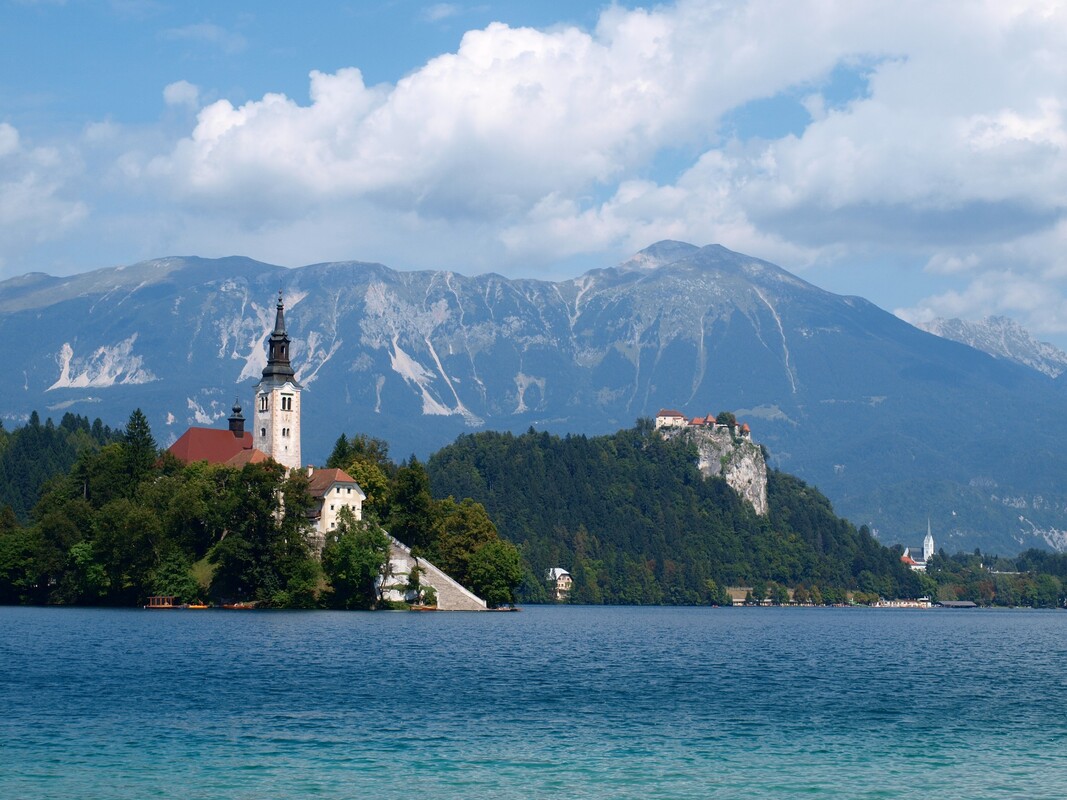
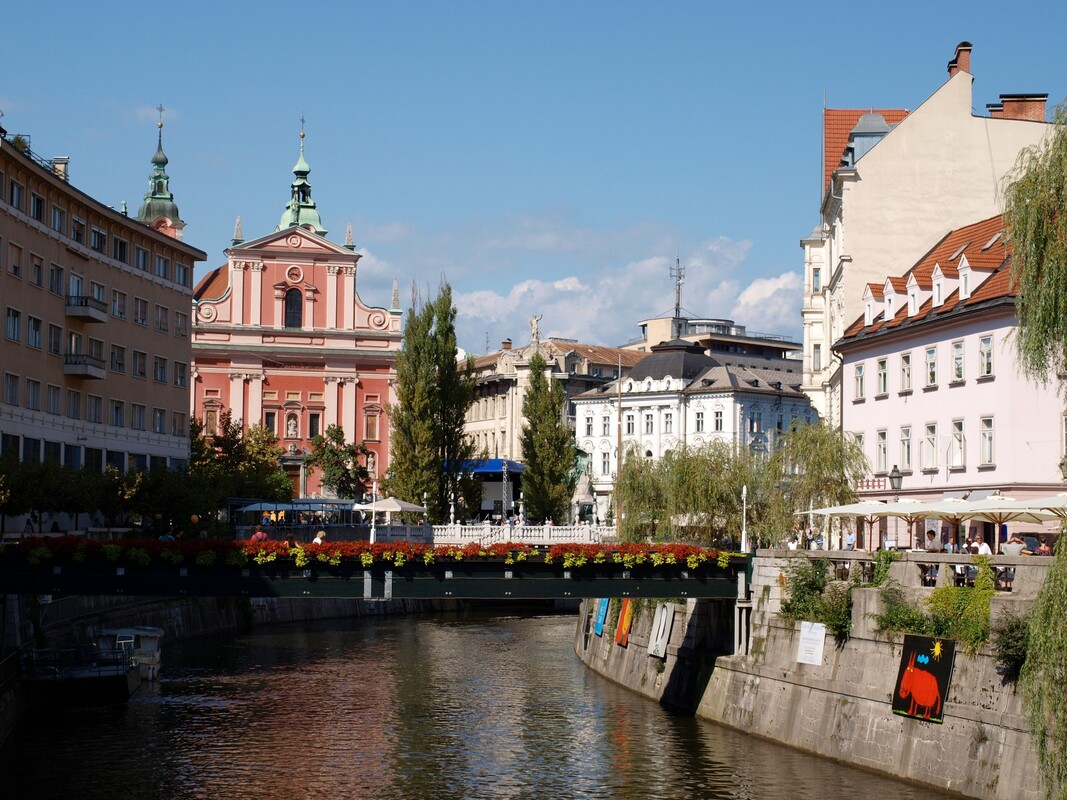
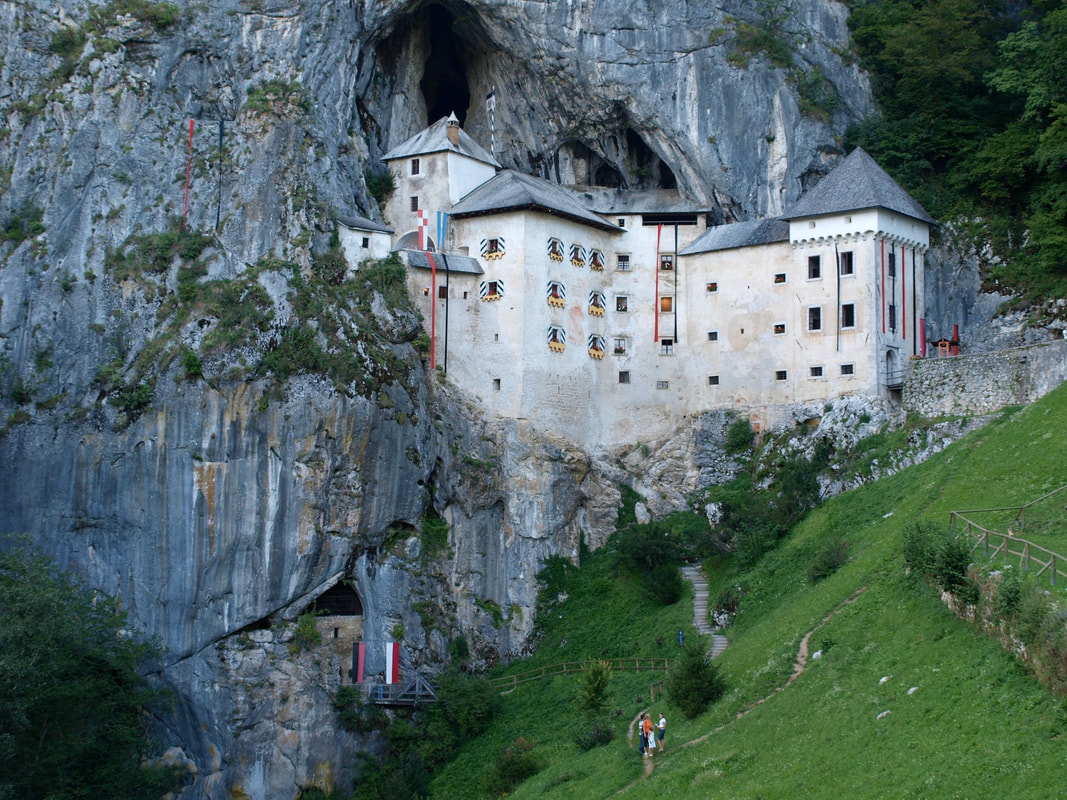


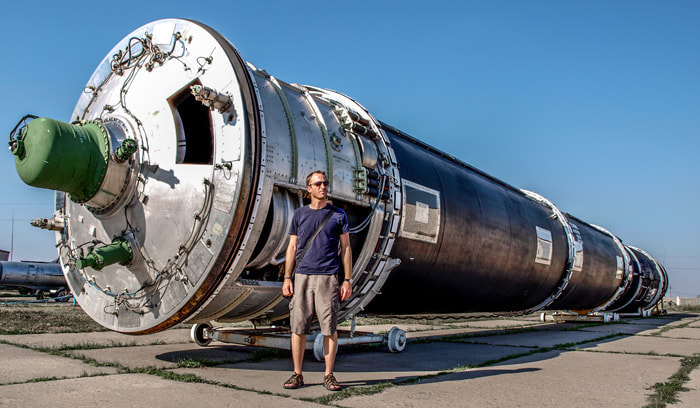
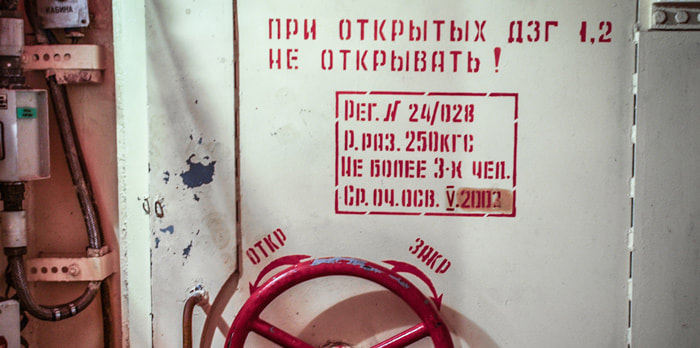
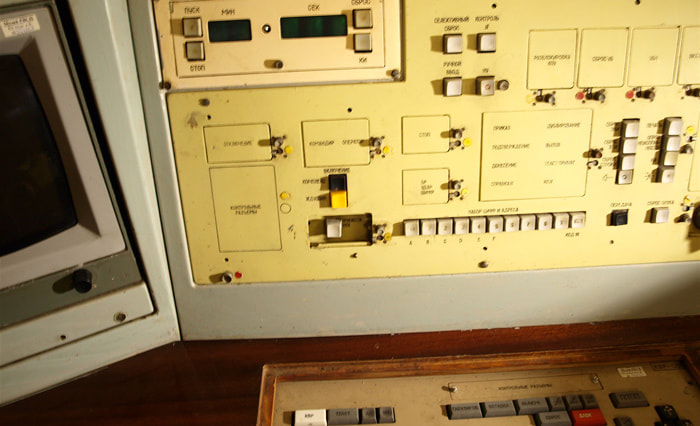
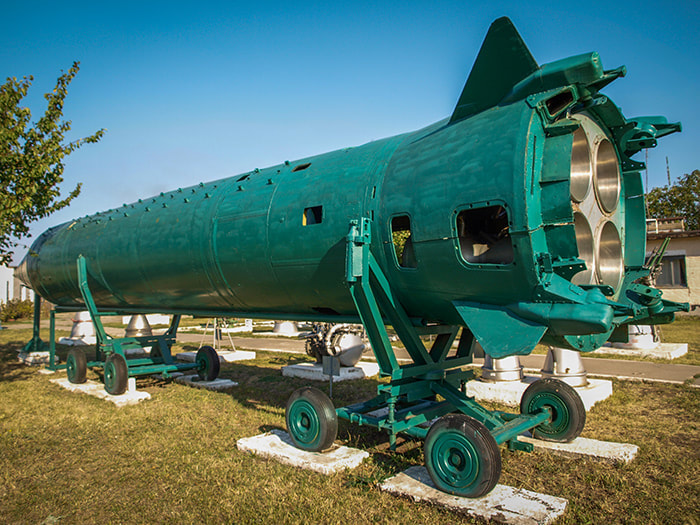
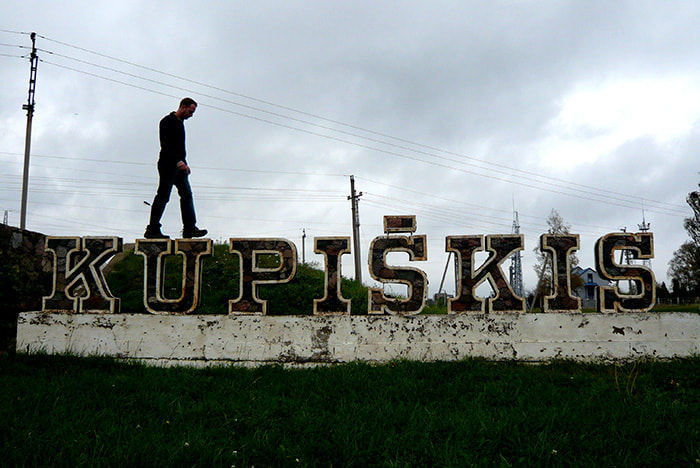
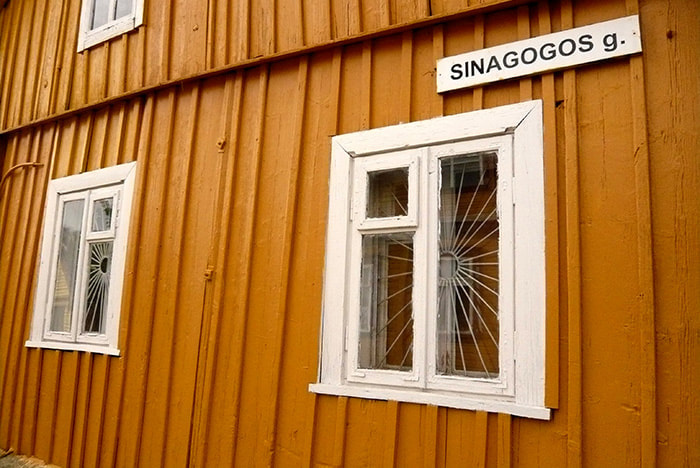
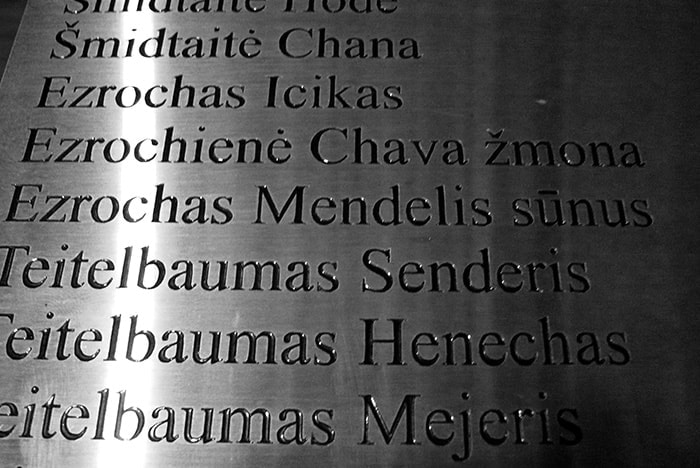





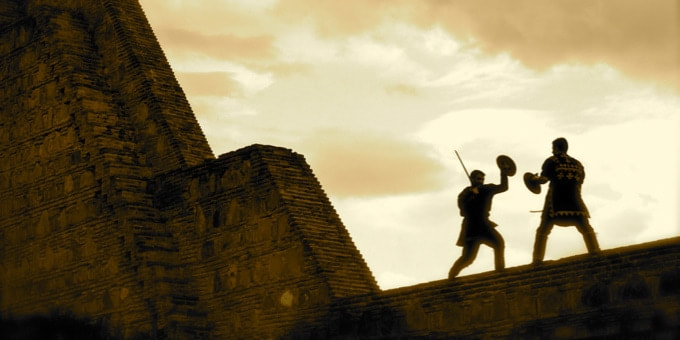
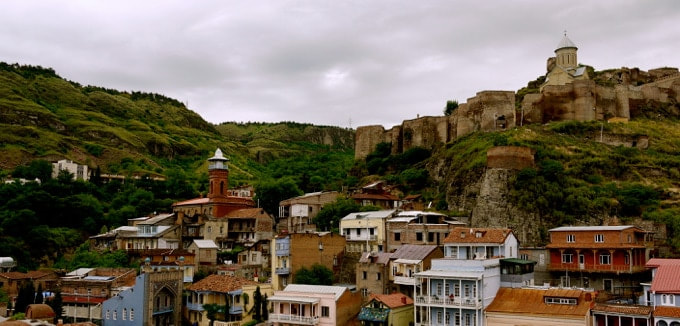





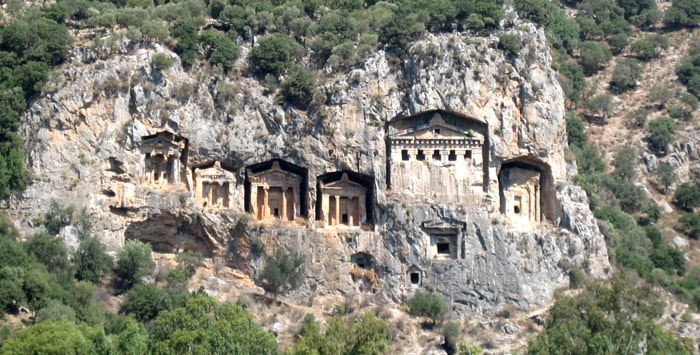

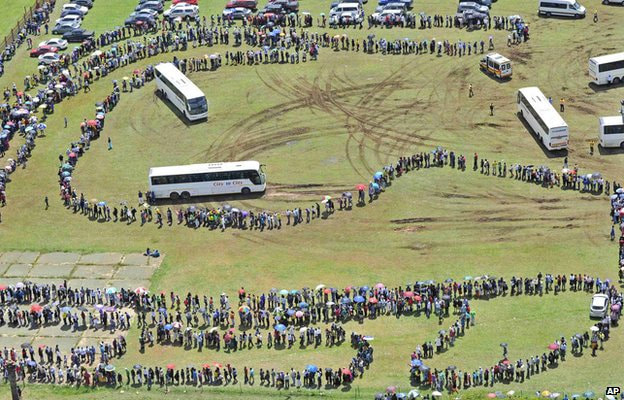
 RSS Feed
RSS Feed

